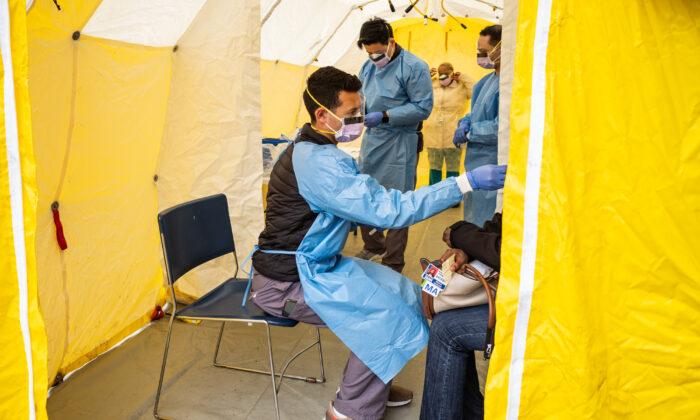The Centers for Disease Control and Prevention (CDC) has added three new symptoms of the CCP virus, the novel coronavirus that causes the COVID-19 disease, to its list.
The other symptoms in the list are fever or chills, cough, shortness of breath or difficulty breathing, fatigue, muscle or body aches, headache, the new loss of taste or smell, and sore throat.
The federal agency said the list doesn’t include all possible symptoms and will continue to update it as research progresses.
Other medical institutes have added to the existing list of symptoms. The Harvard Medical School (HMS) also includes loss of appetite as one of the symptoms.
“In some people, COVID-19 causes more severe symptoms like high fever, severe cough, and shortness of breath, which often indicates pneumonia,” said the HMS.
“These may occur with or without respiratory symptoms,” said HMS, adding that the infection affects brain functions in some patients.
“Specific neurological symptoms seen in people with COVID-19 include loss of smell, inability to taste, muscle weakness, tingling or numbness in the hands and feet, dizziness, confusion, delirium, seizures, and stroke,” said the HMS.
It said the gastrointestinal symptoms might start before other symptoms like fever, body ache, and cough.
“The virus that causes COVID-19 has also been detected in stool, which reinforces the importance of handwashing after every visit to the bathroom and regularly disinfecting bathroom fixtures,” said the university.

Cytokine Storms
The HMS said COVID-19 can cause an overreaction of the body’s immune system, a condition called cytokine storm.“In some people with COVID-19, the immune system releases immune messengers, called cytokines, into the bloodstream out of proportion to the threat or long after the virus is no longer a threat,” it said.
A cytokine storm is harmful because when the body’s cells get attacked by its own immune system.
“A cytokine storm triggers an exaggerated inflammatory response that may damage the liver, blood vessels, kidneys, and lungs, and increase the formation of blood clots throughout the body. Ultimately, the cytokine storm may cause more harm than the coronavirus itself,” said HMS.
A cytokine storm can be detected in a COVID-19 patient by a simple blood test.
“Trials in countries around the world are investigating whether drugs that have been used to treat cytokine storms in people with other, non-COVID conditions could be effective in people with COVID-19,” said the HMS.





